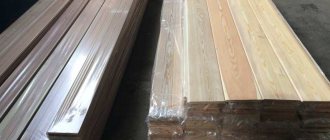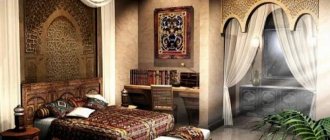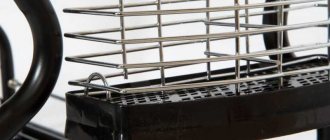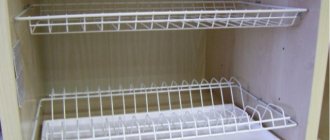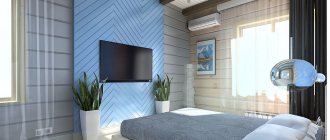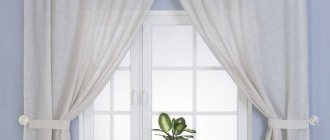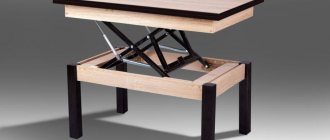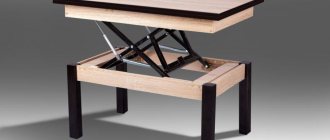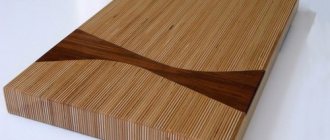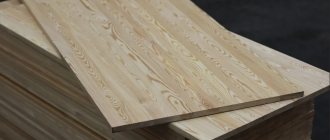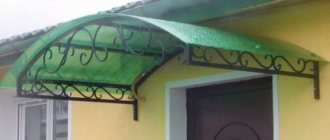The key to cozy and warm housing is natural raw materials based on natural components. One of such representatives of finishing materials is considered to be lumber. They are aesthetically pleasing and give the room a unique style.
To further reduce the cost of the design process, calm pine lining is used. Let's consider what it is, what it is intended for and where it is used, as well as its advantages.
Shtil lining is a modern finishing material in the form of a panel, which is successfully used for finishing the internal vertical and horizontal planes of a room. Looks good when decorating residential and office premises, in particular their corridors.
On websites about finishing, you can look at photos of Shtil lining and analyze how it looks in one or another combination. It is thinner than other lining.
When assembled on a plane, there are no recesses at the joints. As a result, you get a flat plane without visible traces of fastening.
Standard sizes
There are standard sizes of Shtil lining, which are slightly larger than other models. Let's take a closer look:
- domestic versions have a profile width from 90 to 150 mm and a thickness from 12 to 25 mm;
- foreign versions have a profile width from 80 to 140 mm and a thickness from 12.5 to 21 mm.
Their length varies from 2 to 6 meters. This allows you to make a smooth and solid plane.
We invite you to familiarize yourself with our range of materials
Larch lining - Extra grade
Wood Larch Width 96 mm Thickness 14 mm Length 3 m Qty.
in pack 4 things. 1850 rub/m2Larch lining - Prima grade
Wood Larch Width 96 mm Thickness 14 mm Length 3 m Qty.
in pack 4 things. 1500 rub/m2
Moisture resistance of lining
Considering its design capabilities, we can say that this product is significantly more resistant to moisture than its conventional counterparts.
On the reverse side of the profile it has shallow depressions that are longitudinally located. They provide ventilation for the entire structure, minimizing the occurrence of various fungi and mold.
Product classification
Based on the assessment of the quality of materials, the lining is classified by grade. Not only the class of raw materials and tree species are taken into account, but also the condition of the appearance of the facing side of the panel, the presence of knots per one and a half linear meters.
Products are divided into four classes:
- “Extra” lining “calm” is distinguished by a high level of quality, excellent thermal conductivity characteristics, and the absence of knots on a smooth and clean surface. This is wood without defects with stable texture and color. The length of the product reaches 5 meters.
- Class “A” allows the presence of one knot per one and a half linear meters. Sometimes, products of this class, for example, from larch or pine, are practically no different from the “extra” variety. The length of the lamellas is 3.8 meters.
- Class “B” assumes the presence of 2 resin pockets and 4 knots per unit length of measurement. It is used, as a rule, for flooring and is characterized by a 5-meter length of boards.
- Class “C” – economy class – the presence of cracks, knots and blue spots is allowed. It is mainly used for economic purposes; it is used to sheathe technical buildings. This material is practically not used in the production of “calm” lining.
Angarsk pine
This tree grows in the taiga, in an ecologically clean environment, and is characterized by the absence of any negative chemical compounds. Calm lining made from Angarsk pine has the following features:
- able to withstand significant temperature changes;
- has low thermal conductivity;
- has increased strength;
- extremely minimally susceptible to decay;
- is widely used for cladding walls, ceilings and doors;
- this material “breathes” and emits a fresh forest aroma;
- Helps purify indoor air.
Useful tips for the master
It is best to cut lamellas with a hand-held circular saw at high speed. This tool allows you to make an even cut without the risk of chips, cracks, or the blade moving to the side.
Treatment of wood with antiseptics, waterproofing agents and other protective agents occurs only after preliminary cutting and fitting of the lamellas.
The installation of sockets is carried out at the junction of the lamellas - this way you can avoid excessive torsion or cracks during cutting inside the board.
Many manufacturers coat their products with protective compounds before sale. This does not mean that you won’t have to apply an antiseptic to the slats - protection against moisture in a warehouse is noticeably different from antifungal protection in an apartment.
It is necessary to carefully select fastening material. Cleaver staples also differ in their characteristics. It is worth choosing wide brackets made of galvanized iron with 2-4 holes for self-tapping screws. High-quality fastening - durable coating.
Calm lining in the interior of any room is a noticeable plus for the atmosphere. Timely care and replacement of defective sheets will extend the life of the repair in the room.
Decorative properties
The material has amazing properties when installed in vertical and horizontal directions. This makes it possible to visually manipulate space. There are possible options:
- light panels directed from bottom to top - visually increase the height of the ceilings;
- a dark panel that is attached across reduces the visible volume of the room.
There are many options for improvisation. With this material you can create the desired appearance of space.
Installation of VSh
The lining is installed vertically or horizontally. Both installation options are used for interior work. When covering facades, the profile is installed horizontally. Before finishing the fences with clapboards, a support base is prepared for the wooden panels.
Timber sheathing is attached to the walls and ceiling . For this, lumber with a cross section of 30x30 mm, 30x40 mm and 40x40 mm is used. Larger cross-sections of slats are used for significant volumes of work on one plane. The timber is tied with mounting metal corners. The corners are attached to the walls and ceiling with dowels, and to the beams with screws.
The junctions of the cladding with the floor and ceiling are covered with plastic or wooden skirting boards. For vertical external and internal corners, polymer profiles designed for plastic panels are used.
Three ways to attach the VSh
Nails or screws
Fasten the bottom flange of the groove. Small nails are driven at an angle with a hammer with an extension into the bottom shelf of the groove. The screws are screwed into the head using a drill. Installation of horizontal panels is carried out from top to bottom. This method requires skill and dexterity from the worker.
Pneumatic stapler
You don't have to buy the tool; you can rent it. The stapler allows you to quickly “shoot” the lining to the sheathing. This method is only suitable for cladding fences inside the house. Horizontal installation is also done from top to bottom. Vertical installation of "Calm" begins from the corners.
Installation of VS on clamps
The most progressive method of installing VSh is to fasten the panels with clamps. The mounting part is a bracket having a shelf with holes and a curved toothed platform (tooth).
Installation begins from the bottom row of the lining with the groove up . It is attached directly to the beam with screws. Then the clamps are immersed with their serrated ends into the groove. The fastening areas are nailed with nails, screwed with self-tapping screws or stapled to the sheathing.
The next row is inserted with tenons into the grooves of the lower panels . The upper lining is punched with a rubber hammer until the protrusions fit tightly into the grooves. The process is then repeated until the final cladding is completed.
Advantages of lining
This lining has a significant variety of shades and does not require additional painting. It is quite dense, which gives it a long service life. It is distinguished by its advantages:
- attractive aesthetic appearance;
- possibility of condensate drainage;
- minimum amount of waste;
- ease of fastening;
- fixation strength;
- wide variety of sizes offered;
- sufficient strength;
- affordable price.
Pine wood
Pine lining “calm” occupies a special place in the line of building materials due to a number of advantages.
- Its woody structure allows for easy absorption of dyes, waxes and varnishes.
- Like other types of coniferous materials, it has antiseptic properties.
- The wood has a dense structure.
- It has good heat capacity and density.
- Has excellent soundproofing properties.
- It is resistant to alkaline solutions and acids, therefore it is used in the manufacture of pipes and containers.
- Able to signal wear with a characteristic crackling sound.
Pine lining is used for cladding various rooms, with the exception of those in which the microclimate is unstable. Due to the fact that pine wood contains a large amount of resins, it is used for exterior cladding.
Buying lining
When considering the question: where to buy Shtil lining, you should go to specialized sites offering its sale and familiarize yourself with the services offered, pricing policy, delivery options and conditions. It’s quite easy to choose the best option and get the long-awaited result.
As you can see, Shtil lining is a high-quality material that is used in modern finishing and has a number of undeniable advantages. Use this high-quality material and create a comfortable and cozy environment in your home!
Sheathing care
As mentioned above, the easiest way to care for lining is made of MDF. It is occasionally wiped with a damp cloth to remove dust. The plastic sheathing is cared for in the same way.
With wooden boards the situation is more complicated. Over time, the varnish will begin to peel off and the paint will fade. To restore external qualities, it is best to dismantle the damaged lining. For this, prepare the room: temperature - no more than 20 degrees, humidity - 50-70%.
The floor in the room is covered and the dismantled boards are placed there. Layers of varnish and paint are removed from them and treated with moisture-resistant compounds. After this, the planks are painted 2 times, allowing them to dry thoroughly. Then the varnish is applied and left to dry for two days, and then re-installed on the sheathing, which was previously cleaned.
Photo of lining calm
Scope of application
To create the cozy atmosphere characteristic of a wooden house, there is no need to build it. Lining for interior decoration can easily cope with this task.
Covering walls with panels allows you to create a complete canvas; it’s not for nothing that lining is also called “wooden wallpaper.” Simple installation and a smooth surface of the material allow the product to be used for covering ceiling surfaces.
- Design solutions in interiors where only a small amount of expensive wood is used, as separate insertion elements, in combination with cheaper lumber - all this refers to the “calm” lining. The product is recommended for use in cladding rooms with stable microclimate parameters.
- It is recommended to clad saunas and baths with panels made of alder or larch. These rocks are resistant to high moisture content in the air, high temperatures and are not subject to rotting processes.
- Larch wood, containing antioxidants, has a beneficial effect on health, strengthening the immune system. Linden panels are distinguished not only by the uniformity of beige tones, but also by the aroma of honey they exude.
- Lining for facades, cladding of gazebos, verandas and balconies has good resistance to moisture and temperature changes. For external cladding, “calm” made of spruce and pine wood is suitable. In addition, these options have a very affordable price.
Having familiarized yourself with the material about the “calm” lining, you can come to the conclusion that the material is ideal in its diversity and versatility. The pricing policy allows both economical finishing options and expensive ones with high quality.
The possibility of use for interior and exterior cladding, visual appeal, environmental friendliness, durability and ease of installation make it simply an irreplaceable ally and favorite in the process of home improvement.
However, to get a good result, you need to carefully study all the properties and take the choice seriously. And the effect in the end will definitely satisfy, because “calm” lining is a material for those who value comfort and quality.
Color solutions in painting
Depending on the style and setting, the existing tone is maintained or changed to a more suitable one. Most often they choose white, brown or blue paint.
Natural
Natural shades of wood add warmth and homeliness to the atmosphere. Depending on the breed, the tone may be more or less warm, darker or lighter.
To protect against external influences, the surface is varnished. Sometimes budget types of wood are tinted to match expensive ones. This clapboard ceiling is suitable for both a traditional wooden house and a modern building.
White
This color has the ability to visually lift the ceiling, making it well suited for low rooms and attic floors. The white lining on the ceiling can be combined with any other shades, so it’s easy to fit it into the interior.
The board can be painted in two ways. For a solid one, 2-3 layers may be needed, the wood patterns are completely hidden. The second option is a whitewashed board. Part of the surface is lightened, the other remains a natural, darker color. This is how the texture is visible. For this option, various impregnations are used.
Wenge
The dark brown tone imitates a respectable type of wood. This shade adds sophistication to the interior. But the ceilings look lower, which is why this type of decoration is only suitable for high rooms.
Blue
The color is reminiscent of the daytime sky and adds freshness and coolness to the interior. This type of painting is especially appropriate in rooms facing south.
Attention! Too dark shades, close to blue, lower the ceiling.
Colored
The painted board looks original and stylish. Thanks to the variety of finishing paints, you can choose any shade. Bright colors (red, blue, orange, purple and others) become accents in the interior. The floor and walls are decorated more restrainedly, and details are added to match the color of the lining.
Light pastel colors also look original. But they are softer and add lightness, expanding the space.
Peculiarities! In spacious rooms, you can choose two matching shades. This solution will emphasize the zonal division of the room.
The color of the board is chosen taking into account the style of the interior and the characteristics of the room. Light colors will increase the height, bright and dark colors will decrease it. Cool shades will cool down a room that has too much sunlight. And warm ones will add comfort.
Short review
What is lining?
Initially, these are thin wooden cladding boards of a certain size. They are connected to each other using grooves and tenons. They can be used for finishing the external and internal surfaces of living rooms, baths, saunas, balconies and other premises. The name is associated with the process of development of railway communication. In passenger cars, the interior lining was made of wooden planks. This made trips more comfortable, because wood, by its natural properties, resists heat and cold, dryness and humidity better than other materials.
Now lining is a thin profiled board, although not always made of wood.

